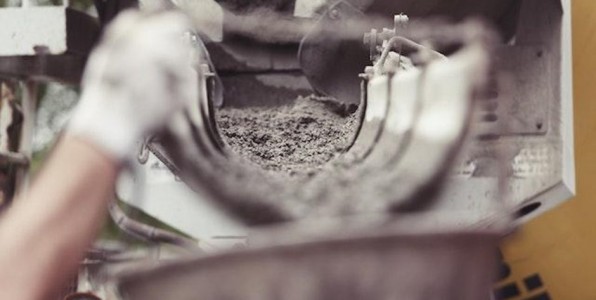8 ways technology can minimise concrete’s carbon footprint

8 ways technology can minimise concrete’s carbon footprint
The post 8 ways technology can minimise concrete’s carbon footprint appeared first on UK Construction Blog.
Concrete is one of the most frequently used construction materials around the world. It has earned its popularity by being a versatile and durable material that can be used to build everything from bridges to huge sports arenas. However, there is one major environmental issue with using concrete: The concrete carbon footprint.
In this article we will discuss technologies that, in different manners, can help minimise concrete’s carbon footprint.
The environmental impact of concrete construction
Construction alone is responsible for 8% of the world’s CO2 emissions and the use of cement in production of concrete is the main reason why that number is so high. Using cement is problematic for many reasons. The main ones being:
- The waste it produces is difficult to maintain and dispose of
- The process of creating concrete with cement is extremely energy-intensive and creates large amounts of CO2 emissions
Because of the immense environmental issues that are associated with concreting, many researchers have explored more sustainable alternatives and additives. Mainly to reduce the carbon footprint of concrete.
Technology and the ways it can minimise CO2 emissions
Using digital technology can make concreting more sustainable in several ways. Here’s a breakdown of how these technologies influence the sustainability of concrete production, placement, and maintenance:
Material Optimization
1. Concrete Mix Design
Digital tools are highly useful during the process of developing and testing concrete mix designs. Especially when optimising different concrete mixes by using alternative and recycled materials.
By using technology, it is possible to establish a concrete mix with, for instance, recycled aggregates, without having concerns regarding the quality and durability of the concrete. By using recycled materials, the need for virgin raw materials is reduced.
Additionally, there are digital tools, such as smart sensors, that can help determine the perfect amount of cement required in a concrete mix. By performing those calculations, less cement can be used without compromising the structural integrity.

Precision and Waste Reduction:
2. Digital Fabrication
3D printing of concrete is a modern option that will produce concrete with less waste. Mainly because calculations are being made to only use the required amount of materials.
This alternative might not be possible for every construction company due to 3D printed concrete having limited load bearing capacity. It can still work for smaller projects with less need for high load bearing qualities.
3. Sensors
Embedding sensors during the concreting process can provide real-time data on the curing process. This will aid in ensuring optimal hydration during the entire curing process. By constantly monitoring the hydration, it will create concrete with reduced chances of cracks or other structural problems.
Efficiency in Construction:
4. Building Information Modeling (BIM)
BIM provides a digital representation of the physical and functional characteristics of a structure. By using BIM, construction teams can more efficiently plan, design, construct, and manage buildings and infrastructure, leading to reduced wastage of materials and energy.
5. Drones
Drones can be used to keep an eye on the construction site by conducting site inspections. They can provide you with information regarding the status of the construction project and help you detect any potential errors at an early stage. This further reduces the need for rework.
Transportation and Logistics:
6. Logistics Software
Using logistics software to plan and optimise the transportation of both raw materials or products, such as concrete slabs, to the site ensures minimal fuel consumption. Even though it might not seem like a big deal, this will also help reduce the carbon footprint.
Recycling and Waste Management:
7. Database Systems
Digital platforms and tools can make it easier for you to keep track of concrete waste. When you manage to track the waste, you can further ensure that it will be recycled or repurposed. The less waste the better.

Durability and Maintenance:
8. Digital Monitoring Systems
Digital tools can be used to monitor the performance of concrete structures over time. Using tools such as smart sensors one can identify potential issues at an early stage. By noticing issues early, it creates possibilities to intervene and fix the issues before it creates further damage to the concrete.
Fixing issues early will aid in prolonging the life of the structure and reducing the need for new construction.
A few concluding words
Incorporating technology in the concrete industry is not just an alternative anymore. More and more countries are releasing new standards that address the environmental issues in the field of construction.
So, in order to keep up with these standards, and create practices that are kinder to our planet, using sustainable technology is a necessity. It enhances the efficiency and quality of the projects as well as facilitates practices that are environmentally friendly and resource-conserving.
Comments are closed